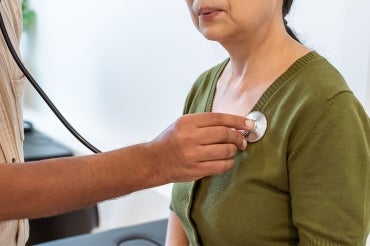Fewer regenerative blood vessel cells may explain higher cardiovascular risks among South Asians: Study

(photo by Fly View Productions/Getty Images)
Published: February 20, 2024
A new study led by researchers at Unity Health Toronto and the University of Toronto has found that South Asians with either heart disease or diabetes had fewer vascular regenerative and reparative cells compared to white, European patients.
The findings present a clue as to why South Asians have a greater risk for cardiometabolic diseases, including heart disease, stroke and diabetes.
The new study, published in the Journal of the American College of Cardiology, suggests that South Asian patients have deficient vessel repair capabilities, which may be contributing to their excess cardiovascular risk, said study co-lead, Subodh Verma, a cardiovascular surgeon at St. Michael’s Hospital and professor of surgery at U of T’s Temerty Faculty of Medicine.
“These data provide a novel and previously unrecognized link to explain why South Asians develop early and aggressive heart disease.”
Research shows that South Asians have a higher prevalence of cardiovascular risk factors and heart disease. People of South Asian ethnicity make up about 25 per cent of the global population, but disproportionately account for more than 50 per cent of cardiovascular deaths worldwide.
A recent Canadian study of more than 70,000 heart disease patients found that South Asian patients were younger and had higher rates of coronary artery disease compared to East Asian and white patients. Other studies have found that when compared with white individuals, South Asians are more susceptible to developing type 2 diabetes, a primary driver of heart disease.

In the current study, 60 South Asian and 60 white European adults with either heart disease or diabetes and at least one other cardiovascular risk factor were enrolled January 2022 and January 2023.
Both groups provided blood samples, which were analyzed using a new test developed by the research team. The test calculated the frequency of certain key vascular regenerative and reparative progenitor cells in the blood samples. Vascular regenerative and reparative cells are found in all humans, and their function is to promote the growth of new blood vessels and repair damaged blood vessels. These cells are critical to maintaining good blood vessel health.
The researchers found that despite having the same cardiovascular risk profile, South Asian participants had fewer circulating regenerative and reparative cells in their blood compared to the white European participants. The study also found that the South Asian group was younger and weighed less.
It’s been long established that type 2 diabetes results in high levels of glucose in the bloodstream, which is very damaging to blood vessels, said David Hess, study co-author, affiliate scientist at St. Michael’s Hospital, adjunct professor of pharmacology and toxicology at Temerty Medicine and professor at Western University. Diabetes coupled with a weakened ability to repair blood vessels appears to create excess risk for South Asians, he said.
“Our research indicates that the South Asian participants who already have increased damage to their blood vessels due to their diabetes also have a decreased ability to repair damaged blood vessels,” Hess said. “It’s like a perfect storm.”
The researchers say the study findings are an important first step towards developing interventions and tailored strategies to combat heart disease among South Asians, who are the largest diasporic group in the world.
“We hope this research can serve as a guide for clinicians to treat South Asian patients on a personalized level,” Hess said. “This could mean earlier intervention with specific medications that could potentially reverse this impairment of vessel repair and regeneration.”
Verma adds, “This is precision medicine. It’s getting a glimpse into a patient’s ability to heal their own blood vessels. It’s getting a glimpse of their future health.”



